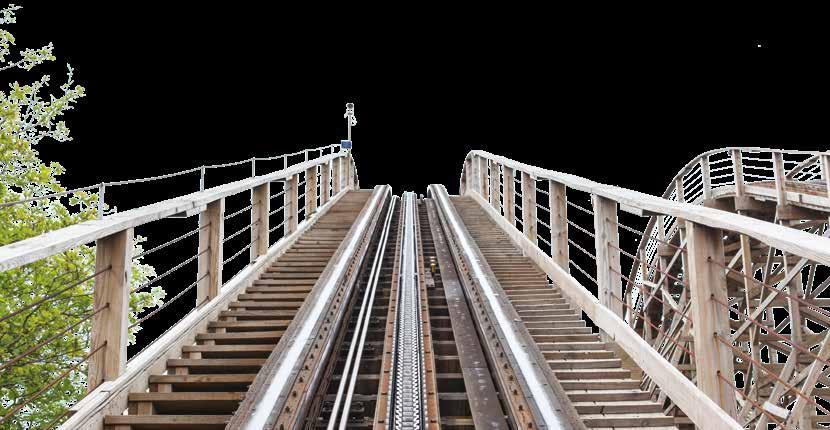
2 minute read
Check It Out: Newton’s Laws
Newton’s Laws
I love roller coasters!
Advertisement
In 1687, Isaac Newton outlined these three fundamental laws that describe the relationship between the motion of an object and the forces acting on it. neWton’s fiRst laW
An object in motion stays in motion, and an object at Rest stays at Rest, unless acted upon by an unbalanced foRce.


Imagine you are sitting in a roller coaster car waiting for the ride to start. Suddenly, the coaster speeds forward. What do you feel? You might feel like your body is being pushed backward into the seat cushion. But there’s no force actually pushing you back. So what is going on? According to Newton’s first law, your body has inertia — a tendency to resist any change in motion. Because it starts at rest, your body will remain at rest until it is acted upon by a force. The seat behind you pushes your body forward so that you move along with the car. While this feels like you are being pushed backward, it is actually inertia that you are feeling!

neWton’s second laW


the net foRce on an object is equal to its mass times its acceleRation.

You saw in experiments 1 and 2 how Newton’s second law applies to roller coasters. Newton’s second law is often written as:
Fnet = ma
If you divide both sides by mass, so that acceleration is by itself, you get:
a = ____ Fnet m
Acceleration is directly proportional to net force (Fnet is in the numerator), so if Fnet increases, acceleration will also increase. Acceleration is inversely proportional to mass (m is in the denominator), so if mass increases, acceleration will decrease.
neWton’s thiRd laW
All foRces come in paiRs. foR eveRy action theRe is an equal and opposite Reaction.
As you sit in your roller coaster seat, your body applies its force of gravity, or weight, onto the seat. The seat applies an equal and opposite force on your body, which is called the normal force.
Engineers rely on this law to send rockets into space. Thrusters burn fuel which creates a downward force on the air below the rocket. The air then provides an upward force on the rocket, pushing it out toward space.






